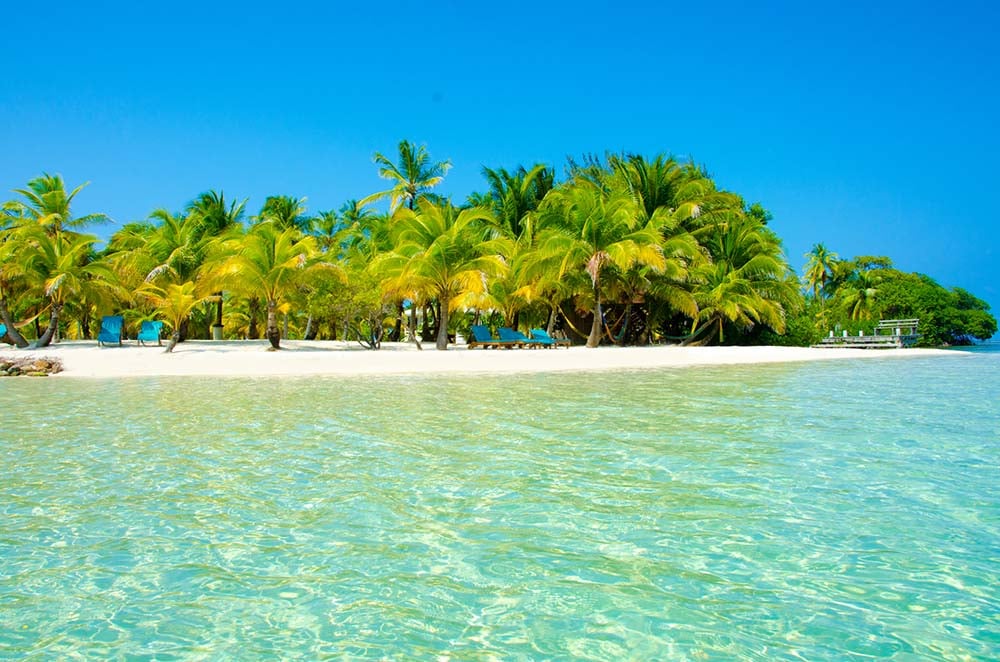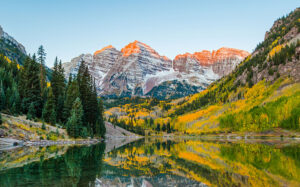As a travel advisor with years of experience planning trips to Central America, it’s my philosophy to embrace both contrast and similarity between countries—whether that’s culturally, geographically, or both. For example, one of my favorite journeys begins in Panama, transitions into Costa Rica’s lush wilderness, and then shifts into the colonial architecture of Nicaragua. Another go-to itinerary kicks off with a visit to the ancient sites and luxury resorts of Belize before an exploration of the beautiful nature and towns of Guatemala. These carefully curated routes maximize your time while showcasing the incredible diversity Central America offers. Each country brings its own unique character—from Panama’s cosmopolitan energy to Costa Rica’s commitment to conservation, from Nicaragua’s colonial charm to Belize’s Caribbean culture and Guatemala’s indigenous heritage. Here’s an in-depth look at these two personal favorite routes that have consistently delivered unforgettable experiences for travelers seeking authentic Central American adventures.
The Panama-Costa Rica-Nicaragua Itinerary
This three-country journey showcases incredible geographic and cultural diversity, taking you from modern urban centers through cloud forests to colonial towns, with opportunities for beach relaxation throughout.
Panama: Where the Americas Meet
Begin your trip in Panama City, a fascinating blend of modern skyscrapers and historical treasures. Walk through the historic district of Casco Antiguo, a UNESCO World Heritage site featuring beautifully restored Spanish colonial buildings, vibrant street art, and an emerging gastronomic scene that rivals any major city.
Explore the city’s diverse culinary scene, which reflects Panama’s position as a cultural crossroads. Sample everything from traditional Panamanian cuisine like sancocho and ceviche to international fusion restaurants that have earned the city recognition as Central America’s culinary capital.
Then head to Valle de Anton, a small, beautiful village uniquely situated inside a volcanic crater—one of only a few inhabited volcanic craters in the world. The microclimate here creates ideal conditions for hiking, birdwatching, and visiting the famous golden frogs that are endemic to this area.
Continue northwest to the scenic highlands of Boquete, where you’ll discover cloud forests, family-run coffee farms, and spectacular views of Volcan Baru, Panama’s highest peak at 3,475 meters. Coffee tours in Boquete showcase the entire process from plant to cup, and many farms offer tastings of their award-winning beans.
There are also plentiful ocean experiences on both sides of the country. Whether you’re interested in luxury resorts on the Pacific or Caribbean coasts or amazing marine nature found at destinations like Coiba Island—a UNESCO World Heritage site known for exceptional diving with hammerhead sharks, manta rays, and pristine coral reefs.
Costa Rica: Pura Vida Paradise
Cross into Costa Rica overland at Paso Canoas or via a short regional flight. This border crossing is straightforward and adds to the adventure of multi-country travel through Central America.
Stay at a secluded eco-lodge in the Osa Peninsula, where howler monkeys and scarlet macaws function as your natural wake-up call. The peninsula contains 2.5% of the world’s biodiversity despite covering less than 0.001% of the planet’s surface. Activities include wildlife watching, kayaking through mangroves, and exploring Corcovado National Park, often called “the most biologically intense place on Earth.”
Then head further north into the misty trails of Monteverde, where you can spot hummingbirds, sip hot chocolate made from local cacao, and experience innovative local gastronomy in a tree-top dining garden. The Monteverde Cloud Forest Reserve offers suspended bridges, canopy tours, and night walks where you might encounter the elusive resplendent quetzal.
Finally, visit the Nicoya Peninsula, designated as one of only five “Blue Zones” in the world, where people consistently live longer than the global average. The combination of diet, lifestyle, and strong community bonds contributes to exceptional longevity. Here you’ll find beautiful beaches, yoga retreats, and opportunities to learn about the lifestyle factors that promote wellness and longevity.
Nicaragua: Colonial Charm and Volcanic Landscapes
Cross into Nicaragua through the Peñas Blancas border and explore the Spanish colonial architecture of Granada, one of the oldest colonial cities in the Americas founded in 1524. The city’s brightly painted buildings, horse-drawn carriages, and central plaza create a romantic atmosphere perfect for leisurely exploration.
After this, head to Lake Nicaragua, the largest freshwater lake in Central America, for kayaking, boating, and paddle boarding around a massive body of water that’s rich in biodiversity. The lake contains over 400 volcanic islands, including Ometepe Island, formed by two volcanoes rising from the water.
If you’re interested in more adventure, hike up Mombacho Volcano for panoramic views and jungle trails. This active volcano offers well-maintained trails through cloud forest, with opportunities to see orchids, howler monkeys, and breathtaking views over Granada and Lake Nicaragua below.
The Belize-Guatemala Itinerary
This two-country route combines Caribbean culture with Mayan heritage, offering beach relaxation alongside profound historical and cultural experiences.
Belize: Caribbean Culture Meets Mayan Heritage
Belize is renowned for its beautiful islands and the Belize Barrier Reef, the second-largest barrier reef in the world. However, its mainland—with its Mayan ruins, archaeological sites like Caracol and Xunantunich, and underground caves at Actun Tunichil Muknal—is an underrated destination for historical adventures.
Caracol is Belize’s largest Mayan site, featuring the massive Caana pyramid that remains the tallest man-made structure in Belize. Xunantunich, meaning “Stone Woman” in Mayan, offers spectacular views from atop El Castillo pyramid, overlooking the Mopan River valley into Guatemala.
Visit the indigenous Garifuna people to learn about their traditional cooking and famous drumming. The Garifuna culture, a unique blend of African, Caribbean, and indigenous influences, is celebrated through music, dance, and cuisine including dishes like hudut (fish cooked in coconut broth).
If you’re looking for pure relaxation, Belize has plenty of barefoot luxury resorts and private island stays. Properties range from eco-lodges in the jungle to exclusive cayes where your villa sits directly over turquoise waters.
Guatemala: Living Mayan Culture and Colonial Treasures
From Belize it only takes a short flight or a scenic ground transfer to reach the UNESCO World Heritage site of Tikal in Guatemala. This ancient Mayan city was one of the most powerful in the Mayan world, with Temple IV standing at 65 meters tall—one of the tallest pre-Columbian structures in the Americas.
The sunrise tour at Tikal is unforgettable, as howler monkeys roar in the distance and mist rises from the jungle canopy. The archaeological site contains over 3,000 structures dating from 600 BC to AD 900.
The majestic Lake Atitlán is surrounded by volcanoes, creating one of the most photographed landscapes in Central America. Three volcanoes—San Pedro, Atitlán, and Tolimán—rise dramatically from the lake’s shores, and the villages nestled around the lake each have their own distinct personality.
In San Juan La Laguna, meet the weavers keeping old traditions alive through natural dyes and traditional backstrap looms. You can watch demonstrations and purchase beautiful textiles directly from artisan cooperatives that support local women.
Then spend a night or two in Antigua, walking the cobblestone streets and shopping for beautiful textiles, handmade jewelry, and accessories. This former colonial capital, destroyed by earthquakes in 1773, has been meticulously restored and is considered one of the finest examples of Spanish colonial architecture in the Americas.
Planning Your Multi-Country Central America Trip
Visa Requirements
Most nationalities receive tourist visas upon arrival in Panama, Costa Rica, Nicaragua, Belize, and Guatemala. However, the CA-4 agreement between Guatemala, Honduras, El Salvador, and Nicaragua allows 90 days total across all four countries combined, not 90 days per country. Check current requirements based on your nationality.
Border Crossings
Land border crossings between these countries are generally straightforward but can be time-consuming. Plan for 1-3 hours at borders, bringing patience and small bills for exit and entry fees. Private transfers with experienced drivers familiar with border procedures make the process smoother.
Best Time to Visit
The dry season (November through April) offers the most reliable weather across Central America, though it’s also peak tourist season. The rainy season (May through October) brings afternoon showers but also fewer crowds, greener landscapes, and lower prices. Costa Rica’s Caribbean coast has different weather patterns, with the driest months being September and October.
How Long Do You Need?
The Panama-Costa Rica-Nicaragua route works well with 14-21 days, allowing proper time in each country without feeling rushed. The Belize-Guatemala itinerary can be accomplished in 10-14 days, though adding extra time for beach relaxation or additional Mayan sites is always worthwhile.
Transportation Options
Regional flights connect major cities and can save time, though overland travel provides richer experiences and easier border crossings. Many travelers combine both—flying longer distances and driving shorter segments to maximize time and experiences.
Budget Considerations
Central America offers excellent value compared to other international destinations. Panama tends to be most expensive, while Nicaragua and Guatemala are notably budget-friendly. Costa Rica and Belize fall in the middle, though eco-lodges and adventure activities can increase costs.
Safety Tips
Central America is generally safe for tourists who take reasonable precautions. Use registered taxis or ride-sharing apps, don’t flash expensive items, be cautious at night, and book reputable tour operators for activities. Your travel advisor can recommend trusted local operators and accommodations.
Cultural Considerations
Language
Spanish is predominant across Panama, Costa Rica, Nicaragua, and Guatemala, though English is widely spoken in Belize and tourist areas. Learning basic Spanish phrases enhances your experience and interactions with locals.
Currency
Each country uses different currency (Panama uses USD, Costa Rica uses colones, Nicaragua uses córdobas, Belize uses Belize dollars, Guatemala uses quetzales), though USD is often accepted. Carry small bills and use ATMs in cities rather than at borders where exchange rates are poor.
Tipping
Tipping customs vary by country. In Costa Rica, 10% service charge is often included at restaurants. In other countries, 10-15% is standard for good service. Tour guides appreciate tips, typically $5-10 per person per day depending on service quality.
Must-Try Experiences
Culinary Adventures
Each country offers distinctive cuisine worth exploring. Try Panama’s sancocho, Costa Rica’s casado, Nicaragua’s vigorón, Belize’s rice and beans with stew chicken, and Guatemala’s pepián. Coffee tours in Panama, Costa Rica, and Guatemala provide insight into this important crop.
Wildlife Encounters
Central America boasts incredible biodiversity. Opportunities to see howler monkeys, scarlet macaws, sloths, toucans, jaguars, sea turtles, and whale sharks (seasonal) abound. Choose eco-lodges and responsible tour operators committed to conservation.
Adventure Activities
From zip-lining through cloud forests in Costa Rica to diving at Coiba Island, from volcano hiking in Nicaragua to cave exploration in Belize, Central America satisfies adventure seekers at all levels.
Cultural Immersion
Visit Garifuna communities, participate in coffee harvest, learn traditional weaving in Guatemala, attend local festivals, and stay in family-run accommodations to connect authentically with local cultures.
Why Combine Multiple Countries?
Multi-country itineraries in Central America make exceptional sense. The countries are geographically close, share cultural threads while maintaining distinct identities, and offer complementary experiences. You’ll maximize your international flight investment by exploring multiple destinations in one journey.
The contrast between countries enriches your perspective. Panama’s modern infrastructure and cosmopolitan energy differ dramatically from Nicaragua’s slower pace and colonial atmosphere. Costa Rica’s commitment to conservation contrasts with Guatemala’s preservation of indigenous traditions.
These journeys create richer narratives than single-country trips, allowing you to appreciate how geography, history, and culture shape each nation’s unique identity while recognizing the common threads of Central American heritage.
Discover more multi-country travel itineraries, Central America planning guides, and expert recommendations at The Inspiring Insight—where we help you craft journeys that reveal the authentic character of each destination and create meaningful connections across borders


